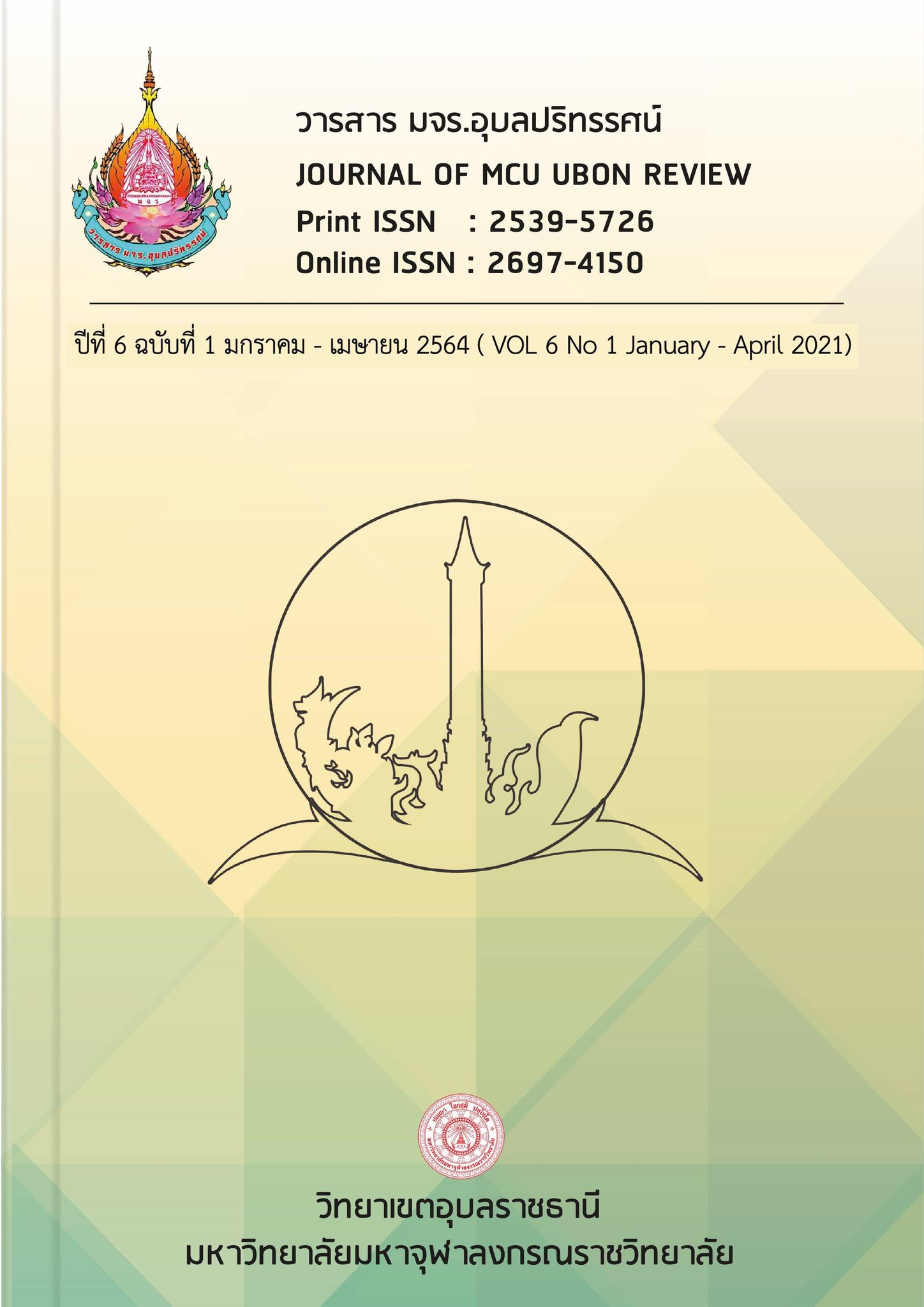BUDDHIST PSYCHOLOGY LEARNING MODEL FOR ENHANCING HOLISTIC HEALTH OF PRESCHOOL CHILDREN
Main Article Content
Abstract
This research included three objectives namely: 1) To study the concepts of enhancing holistic health according to the Buddhist psychology principles; 2) To create a Buddhist psychology learning model for enhancing holistic health of preschool children; 3) To present the Buddhist psychology learning model for enhancing holistic health of preschool children. It was a mixed methods research. The study included 3 phases: Phase 1, concept of enhancing holistic health according to the Buddhist psychology principles; Phase 2, creation of a Buddhist psychology learning model for enhancing holistic health of preschool children; and Phase 3, presentation of a Buddhist psychology learning model for enhancing holistic health of preschool children. The research instruments included: a focus group discussion form and a research questionnaire. The quantitative data were analyzed by using descriptive statistics and T-test. The qualitative data were analyzed by content analysis and descriptive summaries. The research results were as follows. 1. The concept of Buddhist psychology for enhancing the holistic health of preschool children by using the principles of psychology from the theory of psychoanalytic development of Freud and Gesell combined with the Buddhist principles of Iddhipada 4 (path of accomplishment) for formulating a Buddhist psychology learning model for enhancing holistic health of preschool children. 2. Buddhist psychological learning model for enhancing the holistic health of preschool children included 4 main activities related to: 1) Physical; 2) Mental; 3) Social; and 4) Intellectual. 3. For the presentation of the Buddhist psychological learning model for enhancing the holistic health of preschool children, it was found that the overall average before using the Buddhist psychological learning model for enhancing the holistic health of preschool children was at a moderate level (mean 2.75). The aspect with the highest average was social well-being (mean 2.85), followed by mental health (mean 2.81) and the lowest aspect was the intellectual health (mean 2.55). After using the Buddhist psychological learning model for enhancing the holistic health of the preschool children, the overall average was at high level (mean 3.88). The two highest aspects were physical and intellectual health (mean 4.78), followed by social health (mean 4.50) and the lowest aspect was psychological wellbeing (mean 4.44). The researcher tested by using Paire Samples t-test. The results showed that the Buddhist psychological learning model for enhancing the holistic health of preschool children was not different from studying in the curriculum of the Ministry of Education
Article Details
References
การจัดประสบการณ์ที่ส่งเสริมทักษะกระบวนทางวิทยาศาสตร์และจิตวิทยาศาสตร์
ของเด็กปฐมวัย. บัณฑิตวิทยาลัย : มหาวิทยาลัยศิลปากร.
นริสานันท์ เดชสุระ. (2552).รูปแบบการบริหารโรงเรียนสาธิตปฐมวัยของมหาวิทยาลัย
ราชภัฎ. บัณฑิตวิทยาลัย : มหาวิทยาลัยศิลปากร.
นิรัชญา ยี่สุ่นเรื่อง. (2560).การพัฒนาทักษะการพูดของเด็กปฐมวัยโดยการใช้กิจกรรมการ
เล่านิทานประกอบภาพ. รายงานวิจัย. มหาวิทยาลัยสวนดุสิต.
พระธรรมปิฎก (ป.อ.ปยุตโต). (2537). พัฒนาการแบบองค์รวมของเด็กไทย.กรุงเทพฯ:
ธรรมสภา.
______. (2537) แสวงหาทางออกจากวิกฤตภัยใต้ความซับซ้อนของสังคมไทย. กรุงเทพฯ :
ภัคธรรม.
พระมหาบันเทิง ปาณิโต (เครือจินดา), (2549).การประยุกต์พุทธธรรมเพื่อการสงเสริม พัฒนาการเด็กปฐมวัย.บัณฑิตวิทยาลัย: มหาวิทยาลัยมหาจุฬาลงกรณราช
วิทยาลัย.
พิศาระวี วีระพงศ์พร. (2555). ปัจจัยที่ส่งผลต่อการบริหารจัดการศึกษาระดับปฐมวัยในสถาน
ประกอบการ. บัณฑิตวิทยาลัย: มหาวิทยาลัยศิลปากร.
รอฮันนี เจะเลาะ. (2561). การพัฒนาทักษะการฟังและการพูดของเด็กปฐมวัย โดยการจัด
กิจกรรมเสริมประสบการณ์ที่ใช้นิทานประกอบภาพ. วารสารมหาวิทยาลัยราชภัฎ
ยะลา.ปีที่ 13 ฉบับที่ 1 มกราคม-เมษายน.
สำนักงานคณะกรรมการพัฒนาการเศรษฐกิจและสังคมแห่งชาติ. (2551). แนวทางการพัฒนา
เด็กและเยาวชนที่มีความสามารถพิเศษ:บทเรียนต่างประเทศ. กรุงเทพฯ: สำนัก
มาตรฐานการศึกษาและพัฒนาการเรียนรู้สำนักงานเลขาธิการสภาการศึกษา.
สำนักงานเลขาธิการครุสภา. (2549). ชุดวิชาการจัดการเรียนรู้.กรุงเทพฯ: สำนักพัฒนาและ ส่งเสริมวิชาชีพกระทรวงศึกษาธิการ.
สุภิมล จันทรักษา. (2552). การจัดการศึกษาปฐมวัยในสถานศึกษาขั้นพื้นฐาน สังกัด
สำนักงานเขตพื้นที่การศึกษาอุบลราชธานี เขต 2. บัณฑิตวิทยาลัย: การศึกษา
วิทยาลัยบัณฑิตบริหารธุรกิจ.
อารีย์ คำสังฆะ. (2554). การส่งเสริมความเข้าใจภาษาของเด็กปฐมวัยโดยผู้ปกครองใช้ชุด
กิจกรรม“เล่นกับลูกปลูกภาษา.บัณฑิตวิทยาลัย: มหาวิทยาลัยศรีนครินทรวิโรฒ.
Write,T.J.. (2000). Educational Governance and Administration. New Jerseey: Prentice-Hall.

